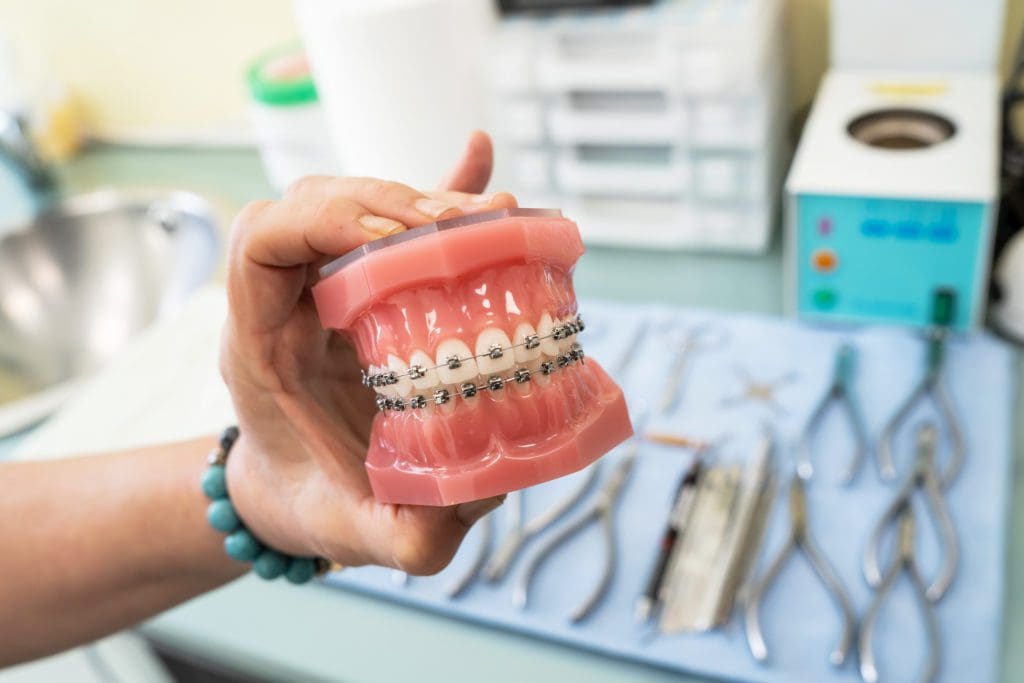Comprehensive Overview to Orthodontics Treatments for Correcting Dental Imbalances
Understanding the complexities of each procedure, including their mechanisms, advantages, and prospective downsides, is critical in making educated choices regarding one's orthodontic therapy. As we navigate via the extensive guide to orthodontic procedures for dealing with dental imbalances, the intricate information of each technique will certainly unravel, losing light on the course toward a harmonious and functional dental positioning.
Orthodontic Procedures Introduction

Along with typical dental braces and clear aligners, orthodontists might also recommend other interventions like headgear, palatal expanders, or retainers to attend to particular placement issues (aligners). These treatments are customized per individual's unique demands and may entail a combination of treatments to accomplish the desired results. Normal changes and tracking are vital parts of orthodontic therapy to make certain progression is on track and to make any needed alterations in the process. By undertaking orthodontic treatments, people can not only accomplish a straighter smile but additionally enhance their general dental health and wellness and feature.
Conventional Braces: Exactly How They Work
When considering orthodontic treatments for dental imbalances, conventional dental braces stand out as a time-tested technique for dealing with teeth positioning. Typical braces are composed of brackets, wires, and bands that function with each other to use continuous stress on the teeth, gradually moving them right into the preferred alignment. The brackets are connected to the teeth using a special adhesive, and the wires are threaded through the brackets. By readjusting the stress of the cables, orthodontists can control the instructions and pressure related to each tooth, assisting them into appropriate alignment in time.
As stress is applied to the teeth through the dental braces, the bone surrounding the teeth is improved to sustain the brand-new tooth placements. Individuals will certainly need regular adjustments at the orthodontist's workplace to guarantee the dental braces continue to apply the right stress for effective teeth activity.
Unseen Aligners: Cons and pros
These clear, customized trays are virtually unseen when worn, making them an enticing choice for individuals looking for a more visually pleasing orthodontic treatment. Individuals can eliminate the aligners before consuming or cleaning their teeth, minimizing the risk of food getting stuck in the appliance and streamlining the cleaning procedure.

Surgical Orthodontic Options
Surgical treatments in orthodontics existing sensible choices for attending to intricate dental misalignments that might not be successfully dealt with through conventional orthodontic treatments. While typical braces and unnoticeable aligners can remedy lots of orthodontic concerns, certain situations need medical intervention to accomplish ideal results. Surgical orthodontic options are generally advised for serious malocclusions, significant jaw disparities, and instances where the underlying bone structure needs adjustment to achieve appropriate positioning.
One common medical orthodontic procedure is orthognathic surgical treatment, which entails repositioning the jaws to correct functional problems such as problem speaking or eating. This surgical treatment is often closest dentist to my location done in cooperation with an orthodontist who helps straighten the teeth before and after the procedure. Surgical orthodontics might additionally include treatments to reveal affected teeth, get rid of excess gum cells, or improve the jawbone to produce a more harmonious face account.
Prior to taking into consideration surgical orthodontic alternatives, people undertake a thorough evaluation to establish the necessity and possible benefits of such treatments. cumming braces. While surgical procedure may appear difficult, it can significantly improve both the feature and visual appeals of the smile in cases where conventional orthodontic treatments fail
Retainers and Post-Treatment Care

Post-treatment treatment involves complying with the orthodontist's instructions vigilantly. This might consist of proper dental hygiene practices, attending follow-up visits, and putting on the retainers as recommended. Failing to comply with post-treatment care guidelines can lead to regression, where the teeth gradually return in the direction of their initial settings. Consistent retainer wear, great oral health, and routine dental examinations are vital for preserving the outcomes achieved via orthodontic surgery and making certain the lasting stability of the dealt with dental placement.
Conclusion
In conclusion, orthodontic procedures offer numerous choices for correcting dental misalignments. Surgical orthodontic options are offered for a lot more serious misalignments. On the whole, orthodontic procedures can effectively enhance dental health and aesthetic appearance.
As we browse through the detailed guide to orthodontic treatments for fixing dental imbalances, the elaborate information of each method will certainly unfold, shedding light on the path toward a harmonious and functional oral alignment. - orthodontics
One of the most typical orthodontic therapies is the use of dental braces, which are composed of metal brackets and wires that apply mild pressure to gradually shift teeth into the preferred setting.When thinking about orthodontic therapies for oral imbalances, standard braces stand out as a reliable technique for fixing teeth placing. In addition, unseen aligners might not be ideal for complex orthodontic problems that require more substantial teeth activity, as they are typically recommended for light to modest instances. Retainers are personalized orthodontic devices created to hold teeth in their fixed placements after the completion of orthodontic treatment.